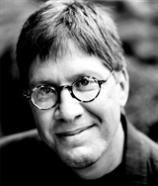Alfred Hitchcock: A Life in Darkness and Light
Review
Alfred Hitchcock: A Life in Darkness and Light
The American Film Institute chose four of Alfred Hitchcock's
masterpieces --- Psycho, North by Northwest,
Vertigo and Rear Window --- for its list of the top
100 American films of the century. In a narrower category --- the
top 100 thrillers --- Hitch ran away from the crowd with nine
selections. He was, in his way, the Beatles of filmmaking.
Patrick McGilligan, whose previous biographies on cinematic legends
include Fritz Lang, George Cukor, James Cagney and Clint Eastwood,
has compiled another masterwork of research and insight. He
concentrates on Hitchcock as an adult rather than trying to analyze
what might have happened in his younger days to account for his
"twisted genius." For example, much has been written about the way
Hitchcock depicts women in his films (e.g., his predilection for
"icy blondes"). "Hitchcock's male heroes generally do all right,"
writes McGilligan. "His women must kill or die, be humiliated, or
endure a frustrating romance with an important hero on the run. One
way or another the beautiful women always suffered." Yet he
remained devoted to his wife, Alma, until his dying day.
Hitchcock began his career at a time when everything was open in
film. He was a master of both sides of the camera, bringing out the
best from his performers as well as developing new filming
techniques, whether for the sake of art or to keep the accountants
happy. He loved to "tinker" and figure out how to make an image on
a storyboard into reality.
McGilligan draws a fascinating picture of the movie industry,
pitting artiste against tyrannical studio mogul; the battles
between Hitchcock and David O. Selznick are at once amusing,
picayune and frustrating.
ALFRED HITCHCOCK --- the first biography on the writer, director
and producer in nearly 25 years --- offers plenty of "back story"
for each Hitchcock project, beginning with the silent film The
Lodger in 1926. Hitchcock handled the transition to "talkies"
very well, but he never forgot that sound was not always necessary
to set the mood. In fact, McGilligan notes, "In nearly every
Hitchcock film to come, the most celebrated sequences . . . might
as well be silent. If there was sound, it was music, natural noise
or screaming. (He loathed "cued music" that merely confirms what
you can see.") If there was dialogue, it was unimportant --- even
unintelligible.
The author also puts Hitchcock's movies in perspective with other
films and mores of the changing eras. Hitchcock was always battling
with the censors as he tried to push the envelope in terms of
explicitness, while at the same time trying to maintain a degree of
subtlety. He also had to contend with political sensitivities of
certain movies made during wartime (such as Lifeboat) and
the "cold war" years. All of these pieces go into forming the
"Hitchcockian" puzzle.
McGilligan portrays Hitchcock's work habits, his devotion to family
and his loyalty to writers and crew members, and relationships (and
in some cases impatience) with certain actors to paint a
sympathetic portrait, refuting many of the less-than-flattering
allegations about Hitchcock in earlier books.
While many "psycho-biographies" have been written about the master
of the macabre, the tsar of terror, the thane of thrillers, trying
to explain what happened in his life that led him to weave such
terrifying (and terrific) tales, McGilligan's ALFRED HITCHCOCK,
with its in-depth research and easy going narrative, will no doubt
be among the most definitive.
Reviewed by Ron Kaplan (RonKaplanNJ@comcast.net) on January 20, 2011
Alfred Hitchcock: A Life in Darkness and Light
- Publication Date: October 1, 2003
- Genres: Biography, Nonfiction
- Hardcover: 864 pages
- Publisher: Harper
- ISBN-10: 006039322X
- ISBN-13: 9780060393229





